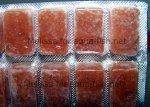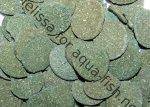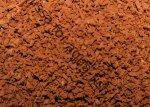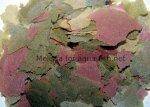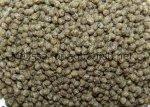Cichlid Food - Facts and Types of Food for Cichlids
There are a large number of cichlids sold and bred in the aquarium industry today. Just as these cichlids can be diverse, so are their eating habits and needs. This is why the foods they are fed come in all different shapes and forms. In the aquarium industry it is highly recommended that you feed your cichlids a variety of foods to keep them well balanced and healthy. This helps to promote growth as well as reproduction and it improves the color and quality of your fish. Cichlids all have the same basic needs despite their difference of original habitats. They all need to get the maximum amount of nutrition through the various foods they eat.
Facts:
There are over 1300 different species of cichlid discovered from freshwater bodies around the globe. Most of these come from the lakes and rivers found in Africa and South America, but others are also found in Asia and Central America.
There are some species of cichlids that are herbivores meaning they eat only vegetable matter such as algae and plants. Some cichlids are Carnivores and eat smaller fish, insects and other animals. A large number of cichlids tend to be omnivores, which means they eat both meat and vegetable matter.
Types of Food:
- Manufactured dry fish flakes, pellets and granules are a very common food for most fish, not just cichlids. This tends to be the cheapest kind of food to buy for aquarists. When looking for a dry food you’ll want to look for one with meats and veggies. Be sure to find out if it is fortified with extra nutrients such as omega-3 fatty acids for added energy and growth and vitamin C to promote good health. Most of these foods come with added color enhancers, which are pigments that help to bring out the natural colors in your fish. Many dry foods do not contain all of the nutrients your fish require which is why it is important to have several types.
- Algae wafers/ discs are the best when it comes to providing veggies for your cichlid. Be sure to find one that is formulated with spirulina. This type of fish food can be fairly inexpensive so it is a practical everyday food. Spirulina is a food supplement also known as blue-green algae and is known for its excellent nutritional and healing qualities. Spirulina is high in protein, vitamin B-12, Beta Carotene, essential fatty acids and minerals. If you have cichlids that are herbivores look for this type of algae food.
- Frozen worms, shrimp and ground beef hearts are a good source of protein. Most times these foods are fortified with multivitamins to promote good health. Feeding this to your fish can help to boost their immune systems as well as aide in digestive function. Manufacturers process these foods in such a way that it makes feeding easier as well as cleaner. You don’t get as many feedings for your money but it is definitely worth it as a supplement to the flake food.
- Fresh foods or live foods are also beneficial to the health of your cichlids. They provide great sources of protein to your growing pets. Live feeders can get pretty costly as a primary method of feeding so you may want to do this no more than once or twice a week. But be warned that feeders are not always clean or disease free. They are usually the lower quality fish that are not bred for keeping so they are not always raised in the cleanest or healthiest conditions. To ensure healthy feeders, I raise live bearers in clean water just as I do for my cichlids. At feeding time I have no worries that my fish are getting the best quality foods possible.
Overall, there is a vast variety of foods out there to suit the needs of all your different cichlids. Choosing the right foods really depend on what types your fish respond most positively to. The most important thing to remember is to feed your fish foods that are going to provide the most nutrition for maximized health.
